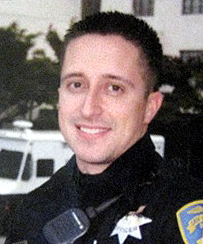 At last Monday’s City Council meeting, Council Member Ursula Reed proposed that the City Council consider reducing its numbers from 7 to 5 when they next draw the redistricting lines later this year. She also proposed to extend term limits to 3 terms per Council Member. Mayor Cassidy thought the idea was worth considering, but he advocated that it be done as part of a larger reform of the whole City Charter. I agree. The Charter hasn’t been touched in decades, comes from a time when San Leandro was a very different city, and it may be time to give it more than a couple of cosmetic changes.
At last Monday’s City Council meeting, Council Member Ursula Reed proposed that the City Council consider reducing its numbers from 7 to 5 when they next draw the redistricting lines later this year. She also proposed to extend term limits to 3 terms per Council Member. Mayor Cassidy thought the idea was worth considering, but he advocated that it be done as part of a larger reform of the whole City Charter. I agree. The Charter hasn’t been touched in decades, comes from a time when San Leandro was a very different city, and it may be time to give it more than a couple of cosmetic changes.
I have advocated elsewhere that San Leandro would be better off having a full-time Mayor with broader powers. San Leandro is currently “ruled” by a City Manager only very indirectly accountable to the community. When a city manager is incompetent or corrupt, but still has the support of the City Council, citizens have little recourse: the only way to remove would be by the impossible task of recalling 4 City Council members. A Mayor, on the other hand, is elected directly and if undesirable he risks not being re-elected or recalled (one recall is easier to manage than four).
I also support Reed’s idea of reducing the number of City Council members. San Leandro’s City Council is quite large for a city its size but here it’s clear that size does not equal competence. I can only hope that it’d be easier to find five competent people to sit in the Council than it’s been to find seven. Reducing the number of City Council members by two will result in some small savings (about $40,000-$60,000), the money could be put into better training or support for the remaining City Council members.
Another issue that needs to be back on the table is that of having district elections. Right now, candidates must live within a particular district to run for that City Council seat but the whole city votes for them. This has the advantage of making all City Council members accountable to the whole city. A Council Member from the Marina, for example, is less likely to push the interest of Marina residents at the expense of those in other districts if the whole city will vote for his re-election. However, running city-wide campaigns is extremely expensive: the greatest cost in any local campaign is that of printing and mailing campaign literature – by having district elections candidate’s costs can be reduced by 1/6th (or 1/4th if we move to a 5-member City Council). This opens up the election to more candidates, in particular challengers who are unlikely to have the fundraising might of established politicians. It also makes it easier for candidates to get to know their constituents: in San Leandro you still get the most votes by knocking on doors and meeting voters face to face.
Yet another compelling reason to move to district elections is that our current at-large elections may be illegal under the California Voting Rights Act, which prohibits at-large elections when these impair the ability of minority candidates from being elected. Despite the fact that over half the population of San Leandro is Asian or Latino, neither group is represented in the City Council which might indicate a violation of the Act. Other Californian cities have been sued by civil rights organizations under similar circumstances and it’s only a matter of time before the same thing happens in San Leandro. We might as well nip this problem in the bud.
Together with making the Mayor more powerful and the City Council smaller, I think we need to grant the City Council greater oversight powers over the City administration. Right now the only hiring decision the City Council does is for the City Manager, who is responsible for hiring and firing everyone else in staff. This has led to an overwhelmingly white workforce in San Leandro and one whose loyalties are towards the City Manager rather than to the city as a whole. While the City Council should not be micromanaging the city, it should participate on key hiring/firing decisions such as those for the Chief of Police, assistant & deputy City Managers and the Finance Director at a minimum.
As I explored in another posting, San Leandro is in dire need of a Citizens’ Police Commission to evaluate complaints of police misconduct, help set hiring practices and discipline standards and act as a liaison with the community. Any revision of the Charter should include the creation of this commission – this would ensure that future City Councils with cozy relationships with the Police would not be able to undermine the work of this body.
Council Member Reed also suggested changing our current term limits from 2 4-year terms to 3. I am not convinced that this is a good idea (though I am convince-able). It’s extremely difficult for a candidate to run against an incumbent in San Leandro. Incumbents usually win by large margins. Since 1970, only one incumbent City Council member has a lost an election. However, term limits not only get rid of bad City Council members but of good ones as well, and take away some of the historical knowledge the Council can benefit from. As Council woman Starosciak mentioned at the last City Council meeting, it takes several years for a Council member to come up to speed – and by then they only have a few years left. Perhaps more importantly, second-term Council members without further political ambitions have no incentives to be responsive towards the community. This is a matter that should be discussed at length.
There are some other minor things that need to be changed in the Charter as well. Currently, for example, a Council cannot vote to fire a City Manager within 3 months of an election. This very much curtails the power of citizens to do away with corrupt or inept City Managers by electing candidates to the City Council without a personal allegiance to him. As this city should be run for the benefit of its citizens and not City Hall there is no reason to keep this provision. And it may also be time to take another look at the binding arbitration provisions of the Charter. These prohibit the Police to strike but give them generous rights to arbitration of their employment contracts. The Police have threatened to use these provisions to stop any attempts to make them contribute their fair share to their own pensions.
The need to reform the Charter is clear, the question is whether there is the political will to do so. That’s difficult to surmise right now.

 SLPD officers involved in fatal shooting identified.
SLPD officers involved in fatal shooting identified. 



 When Mayor Stephen Cassidy announced last March that the city would not be hiring a search firm to look for a new City Manager, I was not the only one
When Mayor Stephen Cassidy announced last March that the city would not be hiring a search firm to look for a new City Manager, I was not the only one 
